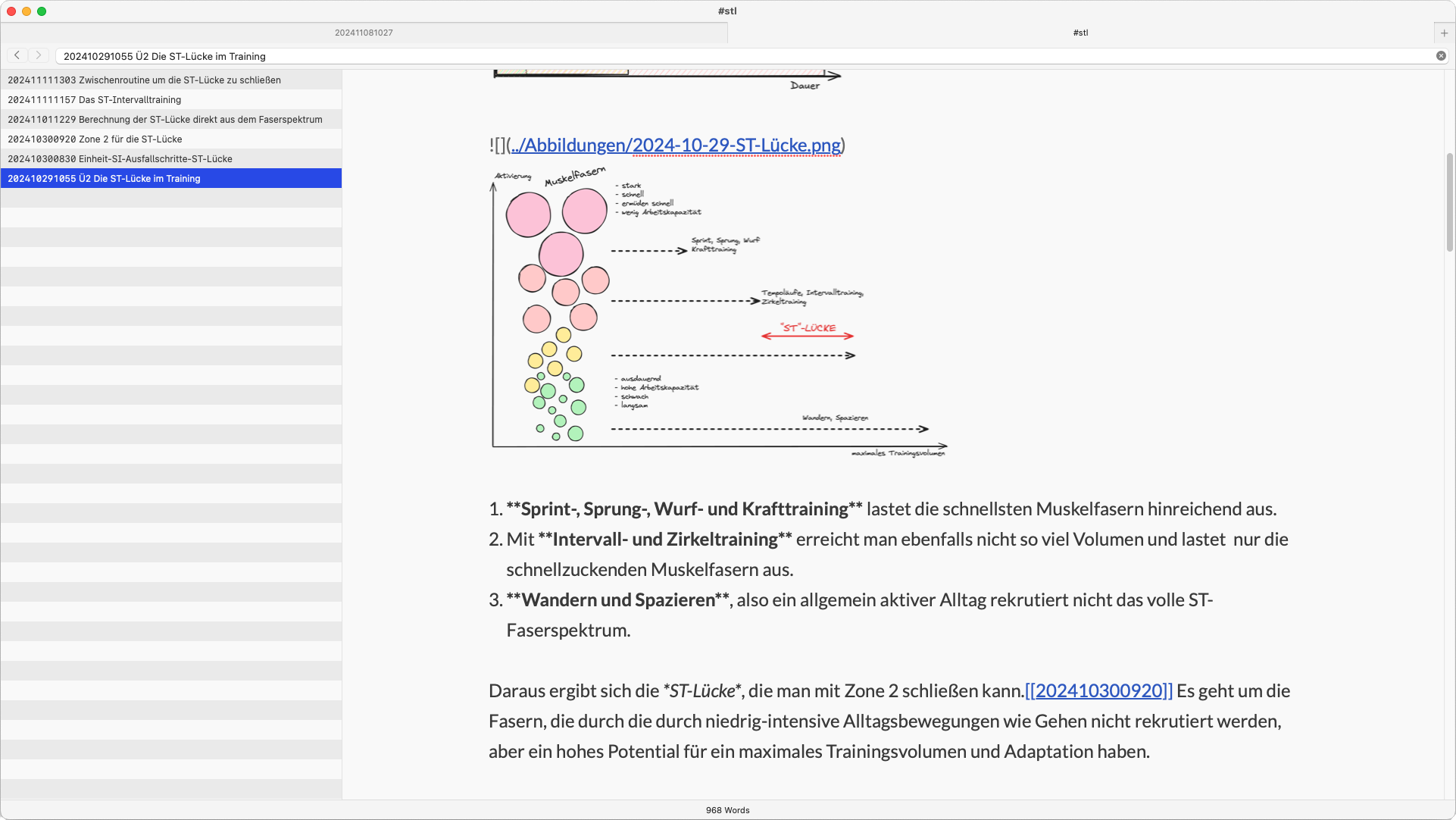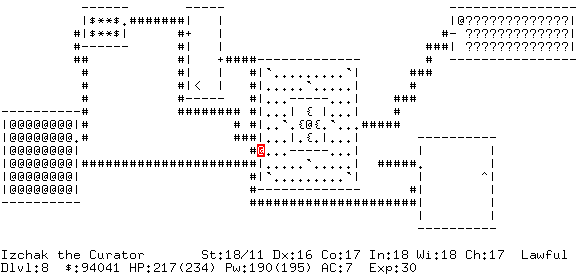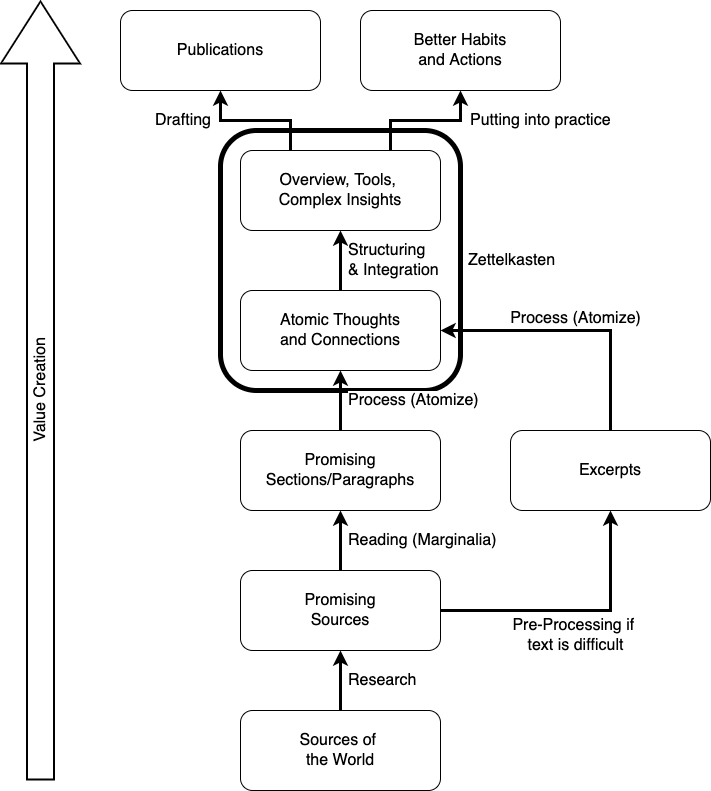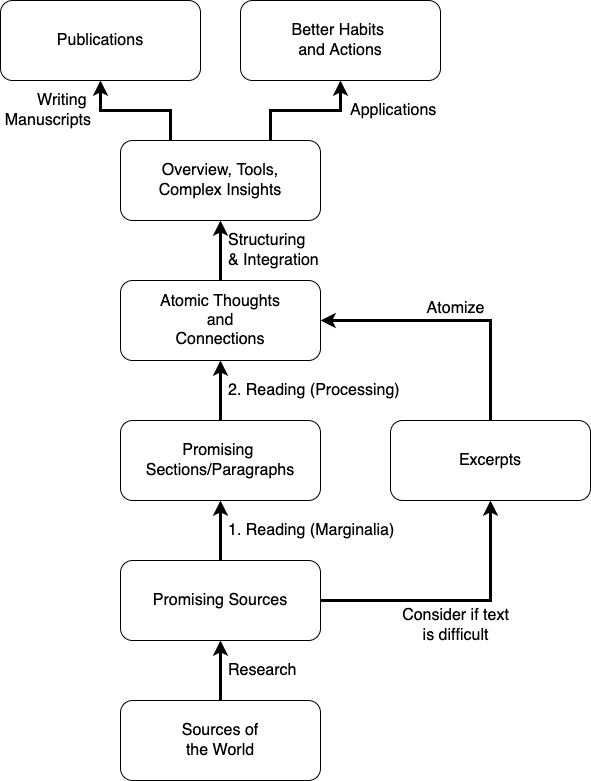Posts tagged “workflow”
How to Do Research with The Archive

Dear Zettlers, Currently, my mind is captured by a phenomenon that I called the ST-gap. This is shorthand for “slow twitch gap”, a model that allows to justify the need for low intensity cardio training and allows you to calculate your needs depending on how you train otherwise. If you have an active lifestyle (going on hikes, walks, work in a garden), perform both strength training and higher intensity endurance training (like interval training, CrossFit-esque training) there is a type of muscle fibre that is undertrained.
Mindscapes: Thinking Environments in Your Way of Living

Thinking needs space. Without this space, we cannot think. At least not with the depth and care required to achieve good results within a reasonable time frame. We create this space through thinking environments. One of these thinking spaces is the simple walk. A special aesthetic of erudition emanates from this form of walk. I would be surprised, for example, if someone imagined this walk in the industrial facilities of a chemical company. It is much more likely that one walks in nature or at least in a park to think.”
How to Increase Knowledge Productivity: Combine the Zettelkasten Method and Building a Second Brain

This article is structured in two parts. First, I summarize the Building a Second Brain (BASB) method by Tiago Forte. Then, I will compare it to the Zettelkasten Method (ZKM). I will first discuss the differences, because they can help to understand BASB and the ZKM more deeply. Then I will explain how to reconcile BASB and the ZKM. Spoiler: they can be combined perfectly. I have made some changes in my own way of working. I will include these as examples at the end.
How to Improve Your Zettelkasten by Learning from Athletic Training

The benefits of your Zettelkasten highly depend on the longevity of each note. Since the Zettelkasten as life-long companion and comrade in the battle for and against knowledge is a long-term endeavor, it is crucial that you create notes and structures that will last a long time. The minimum goal should be that they last a lifetime, so they are optimally designed for yourself. Ideally, they last forever, so future generations can benefit from your work as well.
Playing the Zettelkasten RPG Through Arbitrary Constraints

Today, learn about how to game your Zettelkasten like a roguelike RPG – in a guest post by Allen Wilson (University profile; Twitter) aka @pseudoevagrius on the forum. The metaphor alone is cool, but the 3800+ words strong post doesn’t end there and goes on to give practical advice on how to work under self-imposed constraints to make use of “short runs”.
Book Teaser (2nd Edition): Improved Diagram of the Flow of Value Creation

This is an improved version of the diagram on the flow of value creation. Three comments on that: It goes from bottom to top because this direction reflects the increase of value better. It now shows the idealised boundaries of the Zettelkasten itself. It is possible to have the drafts within the Zettelkasten and the excerpts as well. However, this would detract from understanding the Zettelkasten Method.
Book Teaser (2nd Edition): Flow Diagram of the Zettelkasten Method

Hi Zettlers.
This is a little flow diagram that illustrates the Zettelkasten Process with the help of one of the principles of the Zettelkasten Method, "Creating Pre-Products".
The concept "excerpt" might be interpreted as "literature note" since both concepts are similar. To me, creating an excerpt is a methodological approach of using tools to understand a text. So it is more than just about creating notes on thoughts and ideas embedded in a source.
Field Report #3: Mini-Workflow of a YouTuber
This is a little workflow how I use my spare time when am forced to create YouTube videos and notes. I train from 1pm to 2pm. It is fairly similar to Crossfit and Rosstraining. So I need to take a couple of minutes to cool down and let the sweating stop.
How to Use Wiki Links for Saved Searches in The Archive
You can use [[wiki links]] in The Archive as a clickable shortcut to searches, which support complex logical operators to form very specific expressions. People on the forums seem to enjoy the discovery of clickable complex search expressions in The Archive, so here’s a short explanation of how you can use links like [[#Gardening soil NOT fertilizer]] to create a stored search.
How to Use Tabs in The Archive
The Archive allows you to open multiple tabs for individual contexts. Here’s a presentation of how you can use tabs to have multiple workspaces, each with a different focus.
Eco's 'How to Write a Thesis' Available in English
Finally, after being in print for 38 years in other languages, How to Write a Thesis by Umberto Eco is now available in English!1
I have mentioned the German translation of Eco’s book in the past already (in “Collector’s Fallacy” and “Making Proper Marks in Books”). From his book did I learn that not all Zettel are created equal. If you worked solely with index cards in the 70s, all this mattered a lot.
Remember that it’s possible to have a Zettelkasten without a computer. If you work on paper, you’ll be slow as heck. But you’ll still be more productive than all the other folks not thinking twice about proper knowledge management. Eco’s workflow details will help tremendously if you don’t know how to work with the tools available.
Nowadays, we have reference manager software, note-taking software, PDF annotation software, and whatnot. We tend to think in terms of our tools. But this veils our understanding of the ideas we work with, the texts we read. If we managed everything with index cards (but in different boxes), it’d be easier to look behind the How and see the What instead. Paper is almost never feature-bloated. Software makes it harder, because you can always get stuck at the surface level, switching apps all the time and looking for the next great feature. (Note the book isn’t called What to Write a Thesis With.)
If you care for non-fiction scholarly writing, if you’re a student, or if you’re just trying to figure out what kinds of Zettel notes there are and where they come from – pick up the book! It’s an educational read, but keep in mind most of the tips are outdated since personal computers exist.
(via Manfred of Taking Note; cover image © 2015 The MIT Press)
-
Affiliate link. You buy from this link, and we get a small kickback from amazon. No additional cost for you. ↩